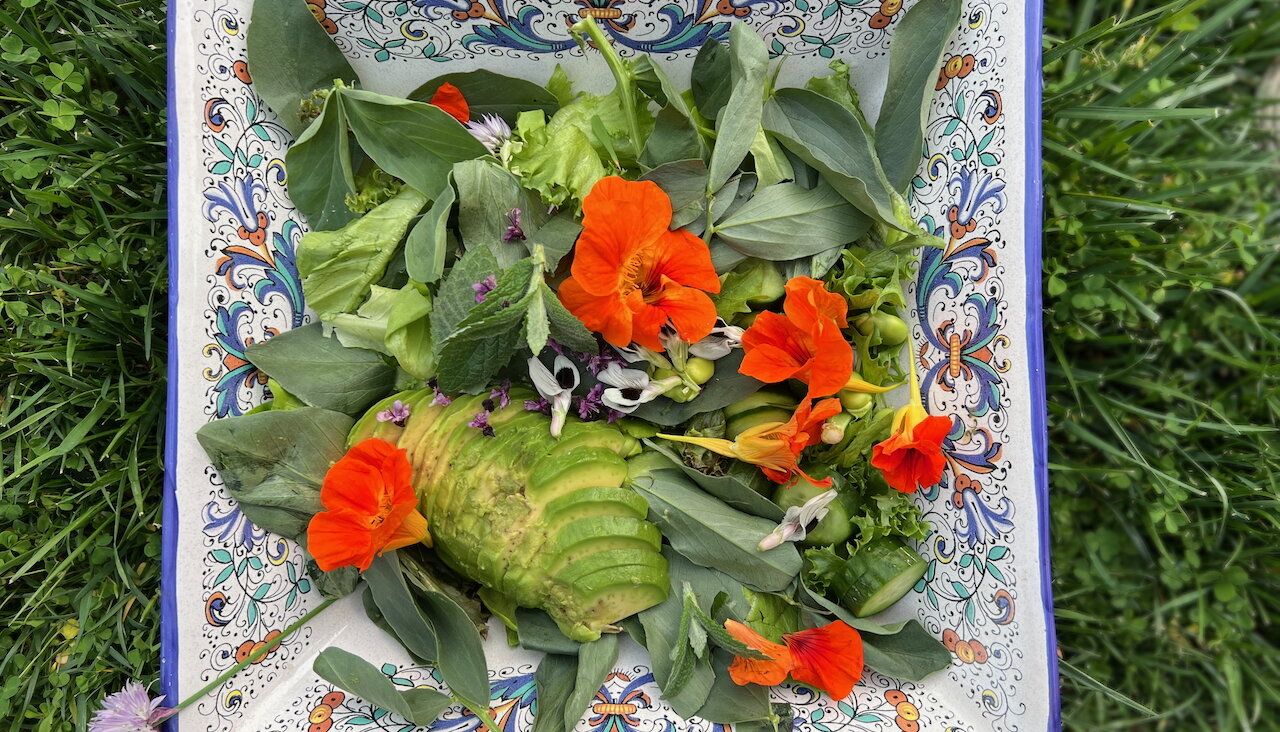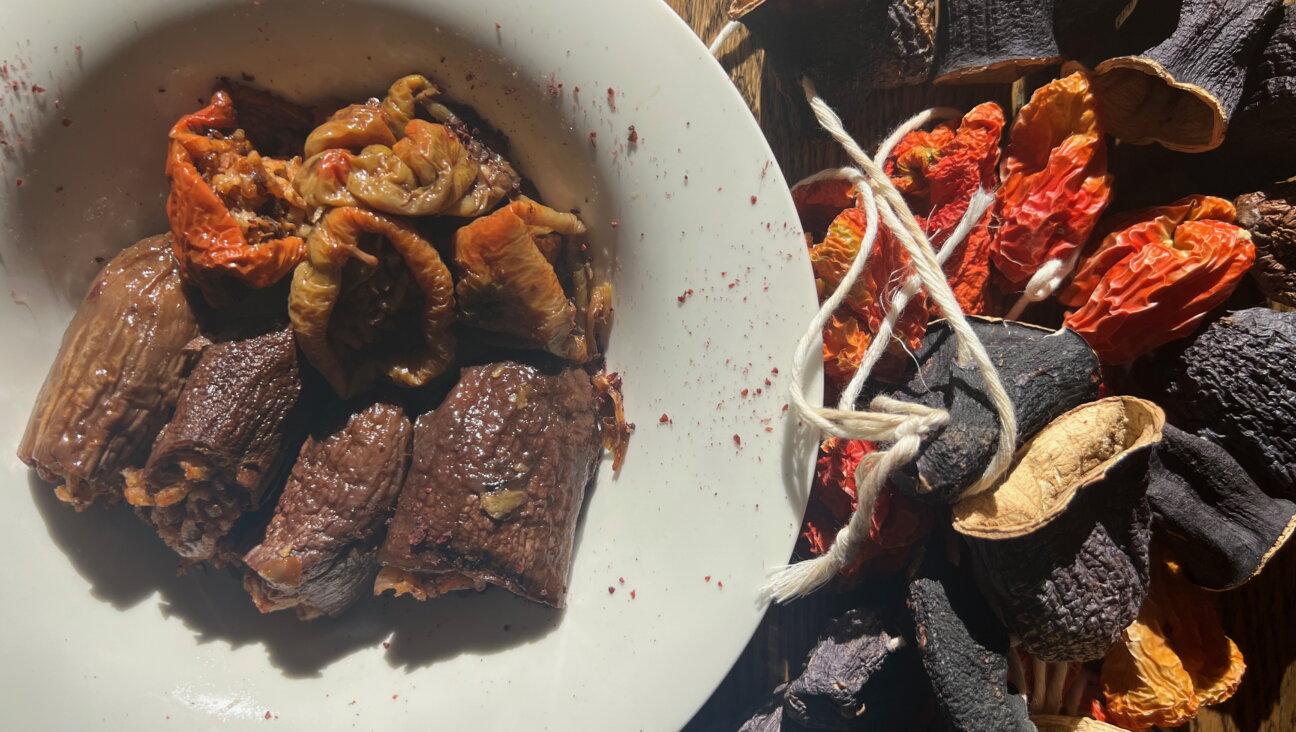What On Earth Is An ‘Amalek Kugel’?

This article originally appeared in the Yiddish Forverts.
Shul was packed last Shabbos – not because of a bar mitzvah or aufruf, but because on the last Shabbos before Purim, Shabbat Zachor, we read the short passage that commands us to ‘erase’ our bitter enemy – the people of Amalek whose most famous descendant was Haman, the antagonist in the Purim story who instigated a plot to kill the Jews.
Because all Jews are commanded to hear this passage read on Shabbat Zachor, there are more men and women in shul that day, and as a result, lots of kids too. As a favor to latecomers who might have missed hearing the passage, our rabbi repeated it after the service was over.
At the kiddush afterwards, as I munched on some cholent and potato kugel, my friend, Shani, asked me if I’d ever heard of an “Amalek kugel”. I replied that I hadn’t and she told me that she herself had just discovered that among Hasidim both here in the US and in Europe, there’s a tradition on Shabbat Zachor to eat four kinds of kugel whose initials in Yiddish spell the word “amalek”:
The A [ayin] is for epl [apple].
The M [mem] is for mel [flour].
The L [lamed] is for lokshn [noodles].
The K [kuf] is for kartofl [potatoes].
The kugels are sold in a package of four small wedges comprising one large circle. Consuming them all symbolizes the annihilation of Amalek.
Three of the above-mentioned kugels are well-known but what on earth is a flour kugel? Turns out, this is a mixture of matzah meal, oil, some water, salt and pepper which is kneaded into a large kneydl [matzah ball] and placed on top of the cholent right before the cholent goes into the oven overnight. As a result of its simmering inside the pot for 18 or so hours, the flour kugel absorbs the delicious flavors of the meat, vegetables and beans.
According to an old saying which I heard from Yoel Menachem Kohn, a young man from the Satmar community, the four kugels are compared to important Biblical figures. They all need to be “as beautiful as Rachel, as zaftik [soft and tender] as Leah, as good as Jacob and as ‘thoroughly baked’ [i.e. ‘butchered’] as Esau”.
The Forward is free to read, but it isn’t free to produce

I hope you appreciated this article. Before you go, I’d like to ask you to please support the Forward.
Now more than ever, American Jews need independent news they can trust, with reporting driven by truth, not ideology. We serve you, not any ideological agenda.
At a time when other newsrooms are closing or cutting back, the Forward has removed its paywall and invested additional resources to report on the ground from Israel and around the U.S. on the impact of the war, rising antisemitism and polarized discourse.
This is a great time to support independent Jewish journalism you rely on. Make a gift today!
— Rachel Fishman Feddersen, Publisher and CEO
Support our mission to tell the Jewish story fully and fairly.
Most Popular
- 1

Fast Forward Ye debuts ‘Heil Hitler’ music video that includes a sample of a Hitler speech
- 2

Opinion It looks like Israel totally underestimated Trump
- 3

Culture Cardinals are Catholic, not Jewish — so why do they all wear yarmulkes?
- 4

Fast Forward Student suspended for ‘F— the Jews’ video defends himself on antisemitic podcast
In Case You Missed It
-

Culture How one Jewish woman fought the Nazis — and helped found a new Italian republic
-

Opinion It looks like Israel totally underestimated Trump
-

Fast Forward Betar ‘almost exclusively triggered’ former student’s detention, judge says
-

Fast Forward ‘Honey, he’s had enough of you’: Trump’s Middle East moves increasingly appear to sideline Israel
-
Shop the Forward Store
100% of profits support our journalism
Republish This Story
Please read before republishing
We’re happy to make this story available to republish for free, unless it originated with JTA, Haaretz or another publication (as indicated on the article) and as long as you follow our guidelines.
You must comply with the following:
- Credit the Forward
- Retain our pixel
- Preserve our canonical link in Google search
- Add a noindex tag in Google search
See our full guidelines for more information, and this guide for detail about canonical URLs.
To republish, copy the HTML by clicking on the yellow button to the right; it includes our tracking pixel, all paragraph styles and hyperlinks, the author byline and credit to the Forward. It does not include images; to avoid copyright violations, you must add them manually, following our guidelines. Please email us at [email protected], subject line “republish,” with any questions or to let us know what stories you’re picking up.
















